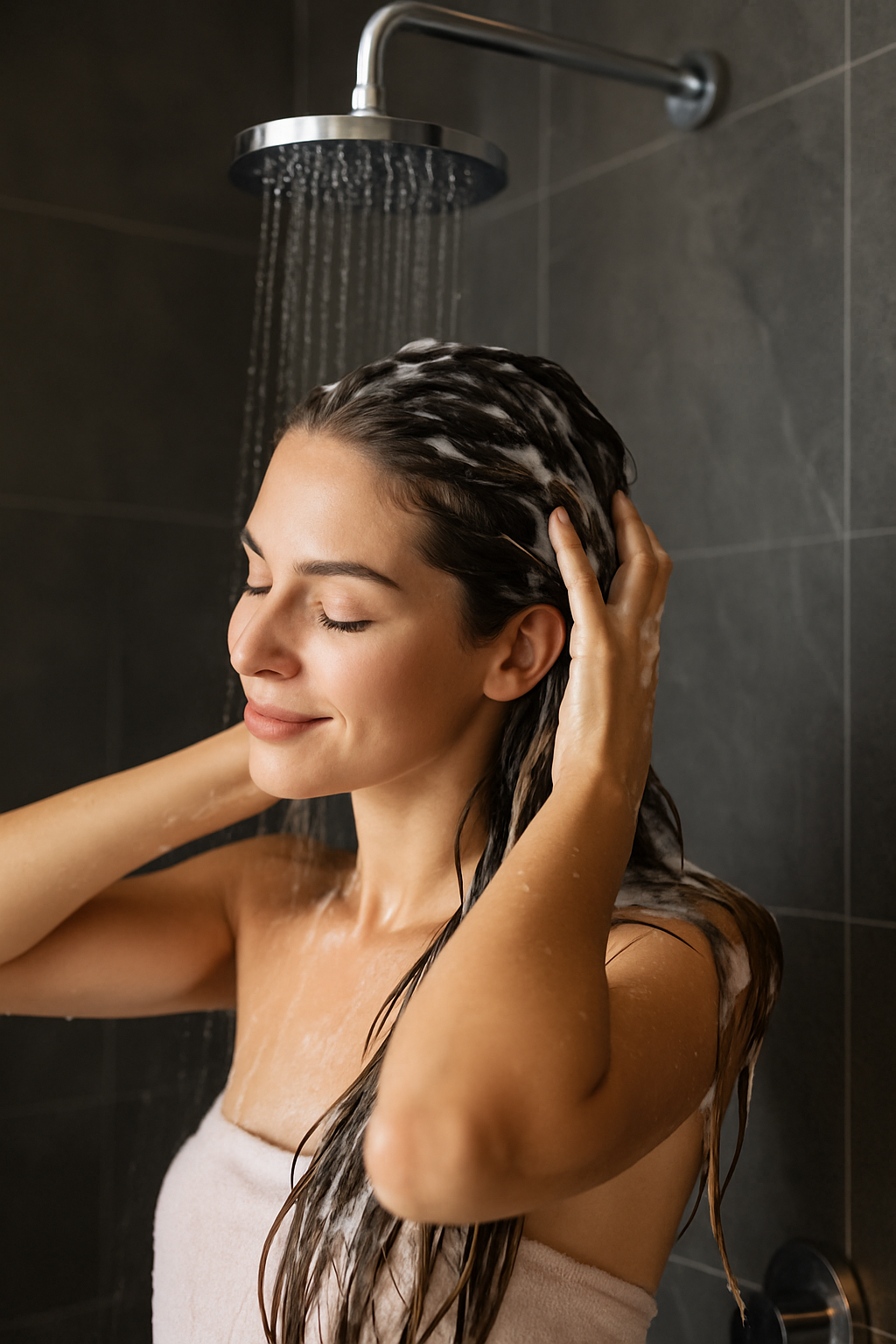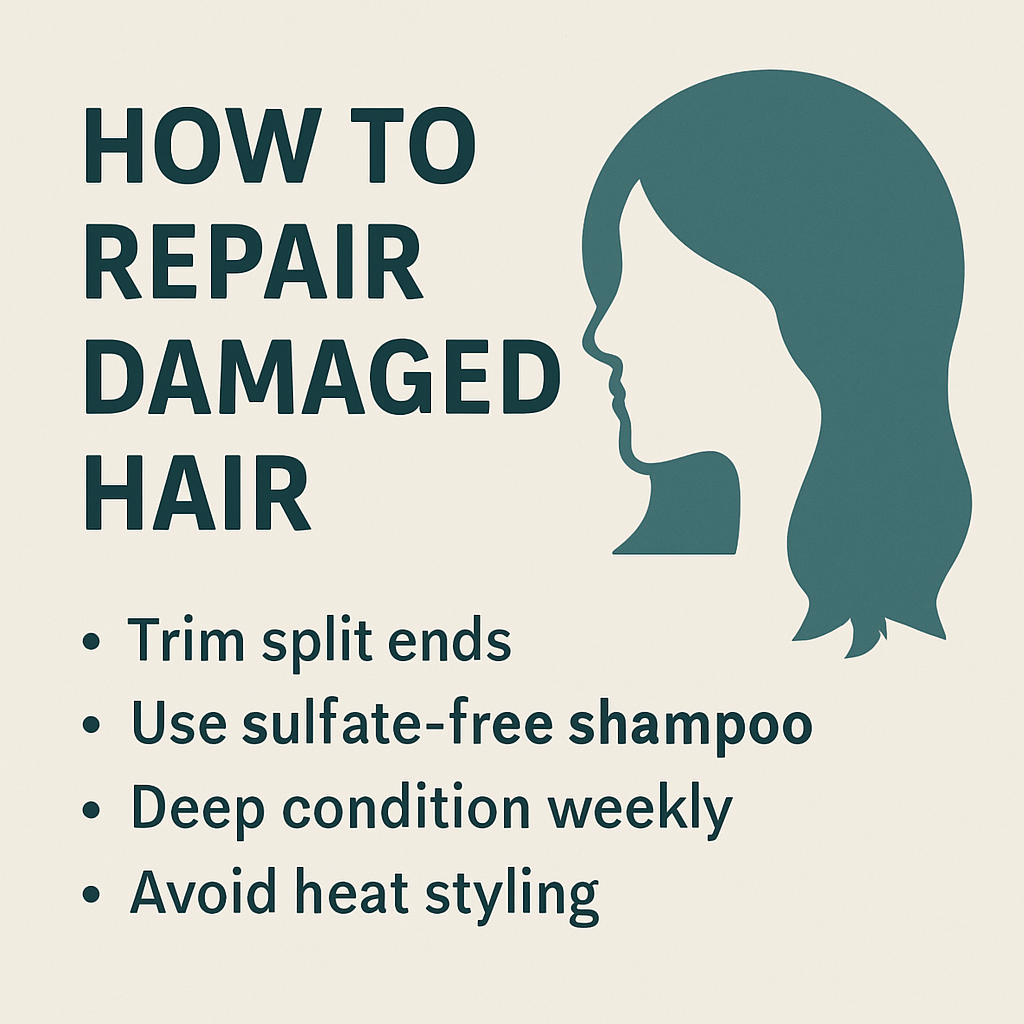How to Restore Damaged Hair After Bleaching: Expert Advice That Works
Bleaching your hair can be a powerful transformation — whether you’re going platinum blonde or adding highlights. But with that beauty often comes a cost: dryness, breakage, and severe damage. If your hair feels like straw or keeps snapping off, it’s a sign that your strands need help — fast.
In this guide, we’ll show you how to restore damaged hair after bleaching using proven methods, professional tips, and the best products. Let’s dive into what really works to bring your hair back to life.
1.
Understand the Damage
When you bleach hair, you’re stripping it of natural pigments using chemicals like hydrogen peroxide or ammonia. This not only removes color but also breaks down the hair’s natural protective barrier. The result?
- Porous hair
- Loss of moisture
- Weakened hair bonds
- Split ends and breakage
The longer your hair stays untreated, the harder it is to recover. Early intervention matters.
2.
Stop Using Heat (At Least for Now)
One of the biggest mistakes people make after bleaching is continuing to use heat styling tools. Curling irons, straighteners, and even hot blow dryers intensify damage. Try these instead:
- Air dry your hair or use a cool shot on your dryer
- Sleep in braids for natural waves
- Use microfiber towels to reduce friction and frizz
We cover more on heatless styling here: Protective Hairstyles to Minimize Hair Damage
3.
Switch to a Sulfate-Free Shampoo
Sulfates are harsh detergents that can strip already weakened hair of the little moisture it has left. Instead, go for:
- Sulfate-free shampoo
- Low pH formulas
- Shampoos with keratin, proteins, or plant oils
Look for ingredients like coconut oil, argan oil, hydrolyzed wheat protein, and panthenol — these help reinforce the structure of each hair strand.
4.
Deep Condition Weekly
This step is non-negotiable. A rich deep conditioning mask helps replace lost moisture and rebuild strength.
Apply a thick conditioner that contains:
- Shea butter
- Avocado oil
- Ceramides
- Amino acids
Leave it on for at least 30 minutes under a shower cap. For better results, use a thermal cap to help the product penetrate deeper.
Want to know how often to deep condition for your hair type?
We also cover this here: How Often Should You Deep Condition Your Hair?
5.
Add Protein Treatments (But Don’t Overdo It)
Bleached hair lacks protein, especially keratin. Protein treatments rebuild the inner cortex of your hair — but be careful. Overuse can make hair stiff and prone to breakage.
Use once every 2 to 4 weeks, especially if your hair feels mushy when wet (a sign of elasticity loss).
Best ingredients to look for:
- Keratin
- Silk protein
- Collagen
- Rice protein
6.
Olaplex or Bond Repair Treatments
These aren’t just buzzwords. Bond repair systems like Olaplex, K18, or Redken Acidic Bonding actually work by reconnecting the disulfide bonds in your hair.
Use once a week and follow the manufacturer’s instructions. These treatments are a game-changer for chemically treated hair.
7.
Trim the Worst Ends
As much as you may want to hold on to length, if your ends are split and fraying, they’ll keep breaking upward. Trim about 1 cm every 6 weeks to maintain shape and health.
Not sure how much to cut? Visit a stylist for a damage assessment.
8.
Strengthen from the Inside Out
Supplements can help speed up recovery:
- Biotin
- Zinc
- Omega-3 fatty acids
- Collagen peptides
Drink plenty of water and eat foods rich in healthy fats, like salmon, avocado, and nuts.
9.
Avoid Further Chemical Treatments
Put the bleach, dye, relaxers, and perms on hold. Give your hair at least 3–6 months to recover before considering another chemical process.
Need a color refresh? Try color-depositing conditioners instead — they add pigment without damage.
10.
Protect Hair While Sleeping
Your nighttime habits matter more than you think. Use:
- A silk or satin pillowcase
- A loose braid or bun at night
- A protective wrap or scarf
These reduce friction and keep your ends from drying out overnight.
Internal Tips (linked organically):
- We also talk about hair growth oils here: Top Oils That Boost Hair Growth
- Curious about co-washing for bleached hair? Learn more here
Conclusion
Repairing bleached and damaged hair takes time — but with the right steps, recovery is absolutely possible. Focus on moisture, protein, and protection. Be consistent, patient, and gentle.
Your hair can look even better than before — with strength, shine, and softness restored.

